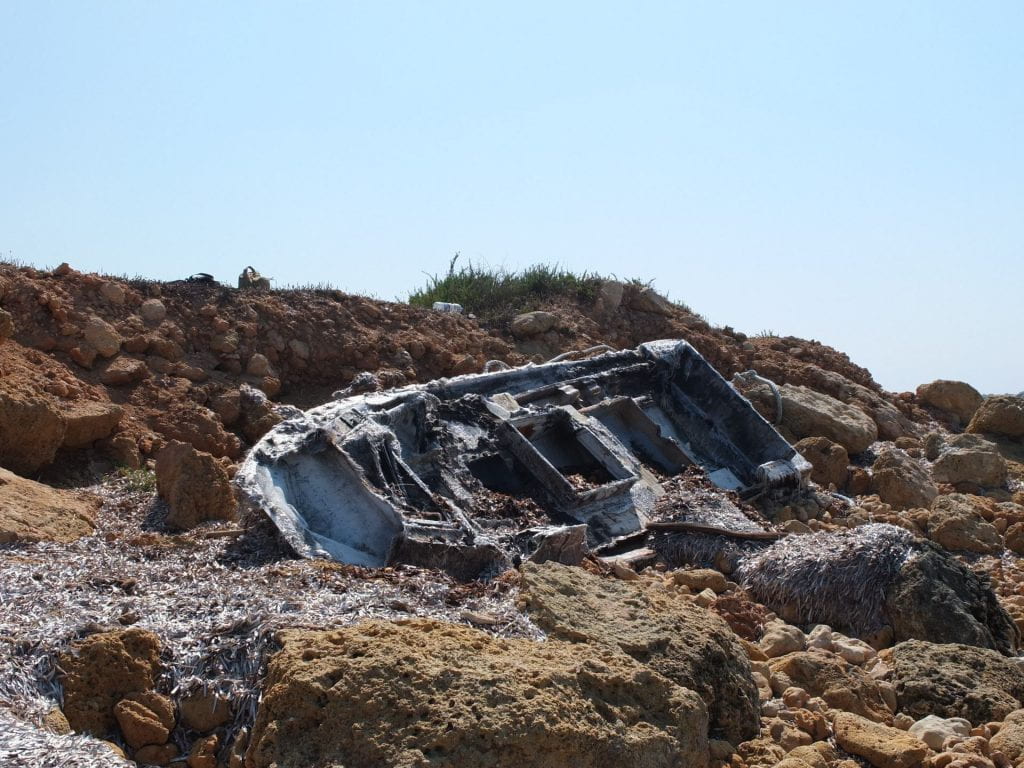This boat made its final journey in Spring 2018. The boat has no name or indication of country of origin, but Tunisian water bottles tucked under the hull on the landward side give us a clue. This plexiglass boat bears no resemblance to the small wooden fishing boats used by locals, thus we suspect that it served to transport undocumented migrants across the Sicilian Channel from Tunisia to Sicily. The boat is smaller than those unseaworthy wrecks shown in the news, highlighting the differences in the forms that forced migration can take, even in the same part of the world. Clothing and personal items from landing sites nearby allow us to infer that this boat would have been used by a small group, probably young men, probably Tunisian nationals, who by making the crossing were repeating a behavior with a deep, millennia-long history. After getting off the boat the travelers on that last voyage would have, if lucky, dispersed into the Sicilian countryside either on foot or by car. The boat therefore represents the maritime portion of a longer journey, perhaps one it made many times before being abandoned. From its burnt out state and missing engine, it has undergone changes since landing on this quiet shore in western Sicily. Who destroyed it, the travelers or locals? We cannot know. This boat nonetheless tells of small-scale voyages in both directions that together form an enduring shared history that national borders cannot suppress.
Emma Blake and Robert Schon are archaeologists at the University of Arizona and Co-Directors of the Arizona Sicily Project.

